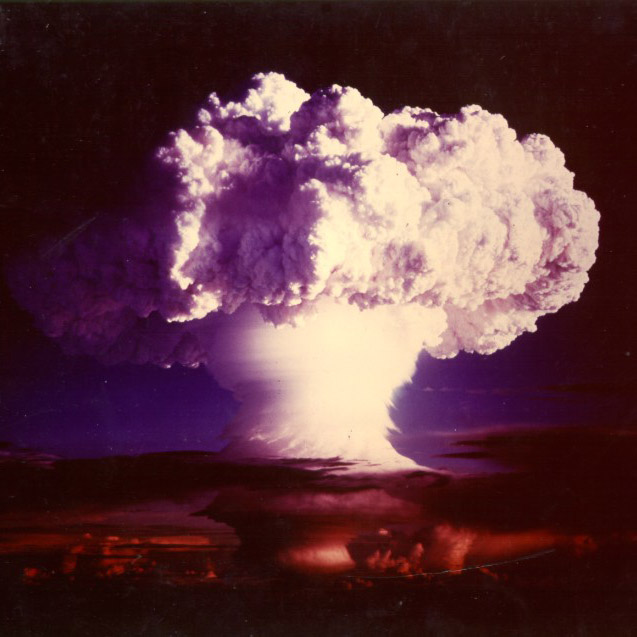איינשטייניום
99
Es
קבוצה
לא רלוונטי
מחזור
7
חסום
f
פרוטונים
אלקטרונים
ניוטרונים
99
99
153
תכונות כלליות
מספר אטומי
99
מסה אטומי
[252]
מספר מסה
252
קטגוריה
אקטינידים
צבע
לא רלוונטי
רדיואקטיבי
כן
Named after Albert Einstein
מבנה גבישי
לא רלוונטי
היסטוריה
Einsteinium was discovered as a component of the debris of the first hydrogen bomb explosion in 1952.
It was identified by Albert Ghiorso and co-workers at the University of California, Berkeley in collaboration with the Argonne and Los Alamos National Laboratories, in the fallout from the Ivy Mike nuclear test.
The new element was produced by the nuclear explosion in miniscule amounts by the addition of 15 neutrons to uranium-238.
It was identified by Albert Ghiorso and co-workers at the University of California, Berkeley in collaboration with the Argonne and Los Alamos National Laboratories, in the fallout from the Ivy Mike nuclear test.
The new element was produced by the nuclear explosion in miniscule amounts by the addition of 15 neutrons to uranium-238.
אלקטרונים לכל גלגית
2, 8, 18, 32, 29, 8, 2
מבנה אלקטרוני
[Rn] 5f11 7s2
Einsteinium is the first divalent metal in the actinide series
מאפיינים פיזים
פאזה
מוצק
צפיפות החומר
8.84 g/cm3
נקודת התכה
1133.15 K 860 | °C 1580 °F
נקודת רתיחה
-
חום היתוך
לא רלוונטי kJ/mol
חום אידוי
לא רלוונטי kJ/mol
קיבול חום סגולי
- J/g·K
שפע בקרומב האדמה
לא רלוונטי
שפע ביקום
לא רלוונטי

זכויות התמונות: Wikimedia Commons (National Nuclear Security Administration)
Einsteinium was first observed in the fallout from the Ivy Mike nuclear test
מספר CAS
7429-92-7
מספר CID של PubChem
לא רלוונטי
מאפיינים אטומיים
רדיוס אטומי
-
רדיוס קוולנטי
-
אלקטרושליליות
1.3 (אלקטרושליליות)
יינון פוטנציאלי
6.42 eV
מסה אטומית
28.5 cm3/mol
מוליכות חום
0.1 W/cm·K
מספר חמצון
2, 3
יישומים
Einsteinium is mainly used for scientific research purposes.
The rare isotope einsteinium-254 is favored for production of ultraheavy elements.
Einsteinium-254 was used as the calibration marker in the chemical analysis spectrometer of the Surveyor 5 lunar probe.
The rare isotope einsteinium-254 is favored for production of ultraheavy elements.
Einsteinium-254 was used as the calibration marker in the chemical analysis spectrometer of the Surveyor 5 lunar probe.
Einsteinium is harmful due to its radioactivity
איזוטופים
איזוטופים יציבים
-איזוטופים לא יציבים
240Es, 241Es, 242Es, 243Es, 244Es, 245Es, 246Es, 247Es, 248Es, 249Es, 250Es, 251Es, 252Es, 253Es, 254Es, 255Es, 256Es, 257Es, 258Es